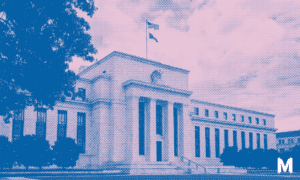Australia’s central bank announced yesterday that it is launching a one-year research program to explore use cases for a Central Bank Digital Currency (CBDC) in Australia.
In the press statement, the Reserve Bank of Australia said it is partnering with the Digital Finance Cooperative Research Centre (DFCRC).
The DFCRC is a 10-year research program with $180 million in funding, consisting of industry partners, universities and the Australian government, which aims to “develop and harness the opportunities arising from the next transformation of financial markets – the digitisation of assets that can be traded and exchanged directly and in real-time on digital platforms”.
The statement read:
“The project, which is expected to take about a year to complete, will involve the development of a limited-scale CBDC pilot that will operate in a ring-fenced environment for a period of time and is intended to involve a pilot CBDC that is a real claim on the Reserve Bank”.
The Australian Treasury will be involved in the pilot program as well, which aims to explore innovative use cases and business models that would support the issuance of a CBDC in Australia.
This news comes after Ebonex announced the launch of a new bitcoin and crypto MasterCard in Australia. Any customer of the Ebonex exchange will be able to spend bitcoin and crypto at any merchant that accepts MasterCard.
A report last year revealed that Australia had the third-highest bitcoin and crypto adoption rate in the world. With projects like Ebonex’s bitcoin and crypto card and the heightened interest by Australians, it’s no wonder that Australia’s central bank is looking into the feasibility of issuing its own CBDC.
Many other central banks, including that of the United States, China, Israel, Japan and Europe, are actively researching CBDCs or conducting pilot programs.
We are in the midst of a race towards digitizing money. Bitcoin, certain altcoins and CBDCs are all competing for the same use case. Many privacy experts have voiced concerns about issuing retail CBDCs, which would make the money we use and spend on a daily basis a direct liability of the central bank.




